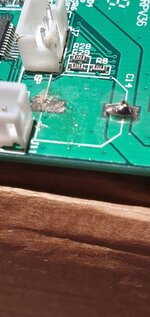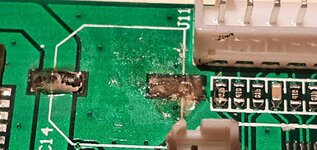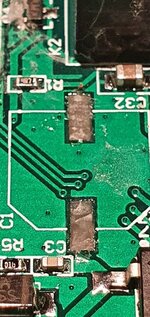Hello
So I have messed up trying to lift a surface mounted capacitor of a pcb. The pad that's part of the pcb came up with the capacitor leg. I then tried to see if I could solder to what was left on the board but made more mess than anything else. See the picture.
Is there any way I could recover the situation or is it new board time? The board is from an intercom. It was faulty. It is expensive to replace and none of the intercom people who I spoke to would consider repairing boards. So I had to try. But I failed . Help.
. Help.
So I have messed up trying to lift a surface mounted capacitor of a pcb. The pad that's part of the pcb came up with the capacitor leg. I then tried to see if I could solder to what was left on the board but made more mess than anything else. See the picture.
Is there any way I could recover the situation or is it new board time? The board is from an intercom. It was faulty. It is expensive to replace and none of the intercom people who I spoke to would consider repairing boards. So I had to try. But I failed



